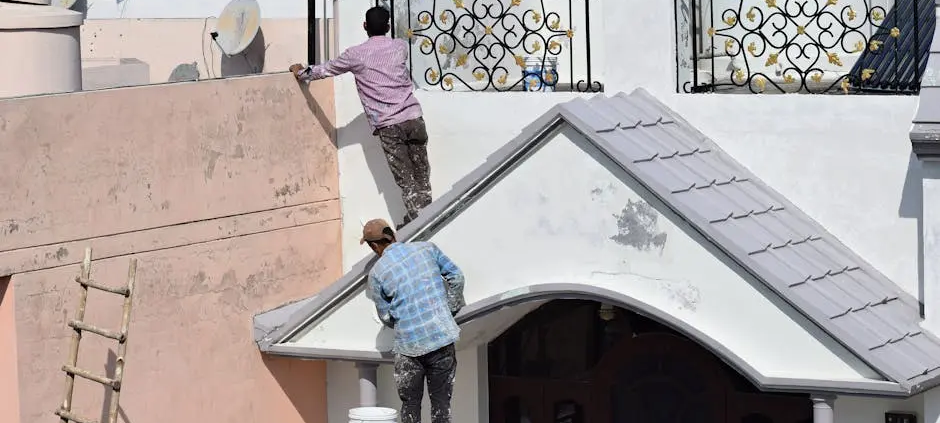Why Roof Waterproofing is Crucial for Houston’s Stormy Weather
Houston is known for its vibrant culture, rich history, and unfortunately, its distinctive stormy weather. With heavy rains and volatile conditions frequently pounding the city, protecting your home becomes an utmost priority. Among the critical measures, roof waterproofing stands out as essential to safeguard your property from the elements. Let’s explore why roof waterproofing should be an integral part of your home maintenance strategy in Houston.
Understanding Houston’s Weather Challenges
Houston’s climate is characterized by high humidity, intense rainfalls, and occasional hurricanes. These conditions make it imperative for homeowners to prepare their properties for the worst. A robust waterproofing system can mean the difference between a dry, comfortable home and costly water damage.
Imagine waking up during a thunderstorm and hearing the relentless patter of rain against your roof. While it’s a soothing sound for many, for homeowners in Houston, it can also be a source of anxiety. Houston’s subtropical climate means that heavy rainfalls are frequent, and without proper measures, even small vulnerabilities in your roof can lead to significant damage. The combination of high humidity, torrential downpours, and the occasional hurricane puts a strain on any roof not fully equipped with waterproof defenses.
The hurricane season presents unique challenges, bringing not only potential wind damage but also intense wave upon wave of rainfall. For homeowners, this means ensuring their roof is ready to handle such deluges. Without effective roof waterproofing, water can seep into cracks, leading to mold, mildew, and other structural issues that not only affect the roof but the entire house. Being proactive about waterproofing your roof is not just a precaution, but a necessity in safeguarding your home during these times.
It’s also worth noting the indirect consequences of insufficient roof waterproofing. When water manages its way through a compromised roof, it can cause damage to electrical wiring and other critical infrastructure within the home, creating both immediate and long-term risks. Additionally, the cost of water damage repair can be significant, often outweighing the initial investment of a comprehensive waterproofing solution. In essence, understanding these challenges enables homeowners to appreciate the value and necessity of waterproofing in a city as susceptible to stormy weather as Houston.
The Basics of Roof Waterproofing
Roof waterproofing involves applying protective barriers to prevent water intrusion. Materials like sealants, membranes, and coatings enhance a roof’s ability to repel water and seal vulnerable joints, thus ensuring longevity and durability against harsh weather conditions.
At the heart of roof waterproofing is the application of specialized materials designed to keep water out. These include a variety of sealants, membranes, and coatings, each serving a specific purpose in fortifying your roof. Sealants are used to fill and guard against leaks, particularly around areas prone to water entry, such as vents and chimneys. Membranes, on the other hand, act as an additional layer of protection, shielding the entire roof surface from water exposure. Coatings provide an extra layer that not only protects but can also offer benefits like UV resistance.
A common roofing option includes the use of asphalt shingles, which are widely used due to their cost-effectiveness and ease of installation. However, due to Houston’s unique climate, it’s wise to reinforce even these resilient materials with added waterproof elements. Solutions like elastomeric coatings or polyurethane are popular for their flexibility and durability, accommodating the expansion and contraction caused by temperature changes and ensuring that the roof remains intact and leak-free.
Understanding the nuts and bolts of roof waterproofing gives homeowners the insight needed to make informed decisions. While it may seem like a straightforward task, it requires strategic planning and execution by experienced professionals to ensure effectiveness. By protecting the vital areas of a roof from potential water ingress, homeowners can rest assured their property is well protected against Houston’s relentless stormy conditions.
Benefits of a Waterproof Roof
Waterproofing your roof not only prevents leaks and structural damage but also prolongs roof life, reduces maintenance costs, and improves energy efficiency by enhancing insulation. Maintaining a watertight roof ensures a safer and more comfortable living environment.
One of the most immediate benefits of a waterproof roof is the prevention of leaks. When water is kept at bay, the threat of mold and mildew developing within your home is significantly reduced. This, in turn, protects the health of the occupants by providing a cleaner air environment. Moreover, a leak-free roof protects the home’s structural integrity, ensuring that the framework, ceiling, and internal systems remain unharmed by potential water exposure.
Interestingly, a waterproof roof also positively impacts a home’s energy efficiency. By preventing water ingress, the insulation remains dry and effective, meaning that less energy is required to heat or cool the home. Over time, this translates into substantial savings on energy bills, an attractive feature for any homeowner. It’s an investment that not only safeguards against adverse weather but also pays off in the form of reduced overhead costs.
Additionally, well-maintained roofs tend to have higher property values. Prospective buyers realize the potential risks associated with leak-prone or poorly maintained roofs and are willing to pay more for homes with secure roofing solutions. Thus, investing in waterproofing could increase your property’s market value while offering peace of mind during Houston’s unpredictable weather, making it a compound advantage for any homeowner looking to maximize their investment.
Steps to Waterproofing Your Roof
Begin by inspecting your roof for existing damage. Clean and prepare the surface before applying a waterproof coating or membrane. Regular inspections and maintenance are key to a successful waterproofing strategy, ensuring your roof remains fortified against Houston’s weather.
The initial step in any waterproofing endeavor is a comprehensive inspection. Identifying existing damage or weak points allows you to address these issues ahead of waterproofing. Look for cracked shingles, loose tiles, and any signs of wear that could potentially lead to leaks. Cleaning the roof surface follows, removing debris, moss, or any growth that may interfere with the adhesion of waterproofing materials.
Once the roof is clean and accounted for, you can proceed with applying the waterproofing solution. For many, this means selecting a high-quality liquid applied membrane, which forms a seamless layer of protection when cured. Liquid membranes are known for their ease of application and ability to cover irregular surfaces effectively, making them an ideal choice for intricate roof designs. For those requiring even greater durability, reinforced rolled membranes might be more fitting, offering added tensile strength and resistance to environmental factors.
Remember, an essential part of roof waterproofing is ongoing maintenance. Conduct scheduled inspections, especially after major weather events, to ensure the waterproofing systems remain intact and effective. Address any emerging concerns immediately, keeping your roof in optimal protective condition. Implementing these steps will keep your roofing system performing effectively, reducing the risk of water damage and the associated setbacks.
Choosing the Right Waterproofing Solutions
Consider factors like roof type, material compatibility, and local weather patterns when selecting waterproofing products. Consulting professional roofers can help identify the best solutions tailored to your specific needs, ensuring optimal protection and performance.
Different roofs require different approaches to waterproofing. Therefore, it’s crucial to choose the right materials based on the type of roof you have. For instance, flat roofs benefit from materials like EPDM rubber and PVC, which are renowned for their water repellence and flexibility. Sloped roofs, on the other hand, might require a different strategy, utilizing high-grade shingles and advanced underlayment to promote efficient water runoff and resist seepage.
The longevity and effectiveness of waterproofing solutions often hinge on their compatibility with existing roofing materials. Take time to review manufacturer specifications and compatibilities, or better yet, seek the input of a professional roofer. An experienced consultant can offer insights that align with your roofing profile and suggest advanced techniques and materials that have proven successful in similar climates.
In concluding your selection process, also consider the local climate factors. Houston’s heavy rainfall and humidity demand strong, resilient products capable of standing up to these rigorous conditions. Options endorsed by regional experts or those with a proven track record in similar environments are often a safe choice. Ultimately, choosing the right waterproofing solutions transcends product selection, involving a conscientious understanding of your roof’s needs and the local climate dynamics to ensure enduring protection.
Securing Your Home with Effective Roof Waterproofing
Investing in roof waterproofing in Houston is a wise decision for homeowners looking to protect their property and maintain peace of mind during stormy weather. By preventing leaks, reducing maintenance costs, and enhancing the comfort and value of your home, waterproofing your roof stands as a needful shield against the unpredictable Texas weather. Prioritize your home’s protection today to ensure it withstands the test of time.








